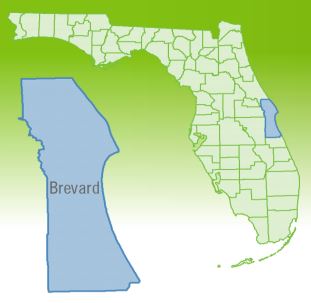Ways to Prep for a Florida Hurricane
Having a emergency plan for a Hurricane is always smart
With the possibility that the 2012 storm season will be a long and challenging one The Hanover Insurance Group today provided tips to help home and business owners in tornado-prone states to prepare and minimize damages.
While tornadoes can occur in the United States during any month weather conditions produce a peak season that runs through October. In areas of the country subject to the harshest storms winds can far exceed those of even the strongest hurricanes averaging between 110-205 mph.
"Tornadoes can form in every state east of the Rockies" said Mark Desrochers president of The Hanover's personal lines business. "Preparing for a tornado is a practical safety precaution that should be taken by all households in these states. With proper preparations home and business owners can significantly reduce the risks of injury to their family and pets as well as damage to their property. This also enables them to recover quicker."
To help prepare for a tornado and respond in the event one strikes The Hanover suggests the following 10 tips:
1) Make an action plan. Prepare in advance so that when a tornado watch is issued you already have an existing plan of action. Unlike hurricanes which tend to be closely monitored for days tornadoes can spring up quickly. In many cases you will have to take shelter within minutes in your own home or a below-ground storm shelter. Experts advise never trying to outrun a tornado by car. Instead move to the basement or to an inner windowless room or interior hall. Protect your head and neck with your arms and hands. Ensure everyone knows the action plan.
2) Create a survival kit. After a storm it may be impossible to use roads for several days. You may be forced to live in your home for a while even if it is wrecked or you're without electricity and water. So it's wise to assemble a survival kit containing a week's worth of non-perishable food bottled water paper plates and cups eating utensils medicines first aid handbook and bandages blanket a radio batteries flashlight soap and toiletries bleach for disinfecting and spare clothing. Store the kit in the basement or other safe area.
3) Have debris removal tools on-hand. There may be a significant amount of debris following a tornado that will have to be moved just to exit your structure. Some of this will be splintered wood and glass. With this in mind store helpful items -- including heavy soled shoes gloves eye protection and a small shovel to safely move debris. This should be kept in the same area as your survival kit.
4) Create a home inventory. Tornadoes can destroy your home and its contents making it difficult to document your property losses which can impede your recovery. With a proper home inventory you will have an acceptable means of documenting ownership and value in the event of a claim. Photograph or shoot video of your entire home or business including the contents of each room and store these with a written inventory and serial numbers in a fireproof safe or safe deposit box.
5) Ensure you have proper coverages in place. It is always a good idea to review your homeowner's policy with your independent insurance agent ensuring you have enough coverage for your contents and the physical structure as well. Also ask about other coverages that may be of value to you in the event of a tornado loss such as reimbursement for temporary living expenses.
6) Create and share contact info. All family members should have the personal and business contact information (phone/email) for quick communications. Also ensure you have your agent and insurer's claims office numbers stored in your mobile phone. After a storm cell service may be more accessible than local land lines. Have important numbers on hand to help expedite your recovery after the storm. It's important to keep your cell phone charged in advance as power may be out for days.
7) Wait for official notice before returning home. If there is an evacuation after a storm wait for official notice that it is safe to return to your home. When returning to your home be cautious when entering a damaged structure. Stay away from damaged or weakened walls.
8) Take photographs and/or video documenting claim damage. Should your home or business be damaged in a tornado take pictures of the entire scene and document all damage -- provided it is safe. Try not to remove items until an insurance adjuster has had an opportunity to visit the property and assess the damage.
9) Keep an accurate record of any temporary repairs or expenses. If you do need to make temporary repairs to help preserve the remains of your home or personal property keep all records to ensure that they may be considered in your claim.
10) Engage with an Independent Agent. With careful preparation and planning -- and assistance from your insurance professional -- you can rest assured that you have the right coverages to meet your needs and a good plan of action in place. This will reduce the time and effort required to recover from a tornado and other major weather events.
While no one can tell you for sure whether a tornado or other weather event will strike your area they are occurring with increasing frequency. So it is a good idea to consult with a local Independent Agent have the right insurance carrier to meet your needs and to be as prepared as you can in advance of such events.






